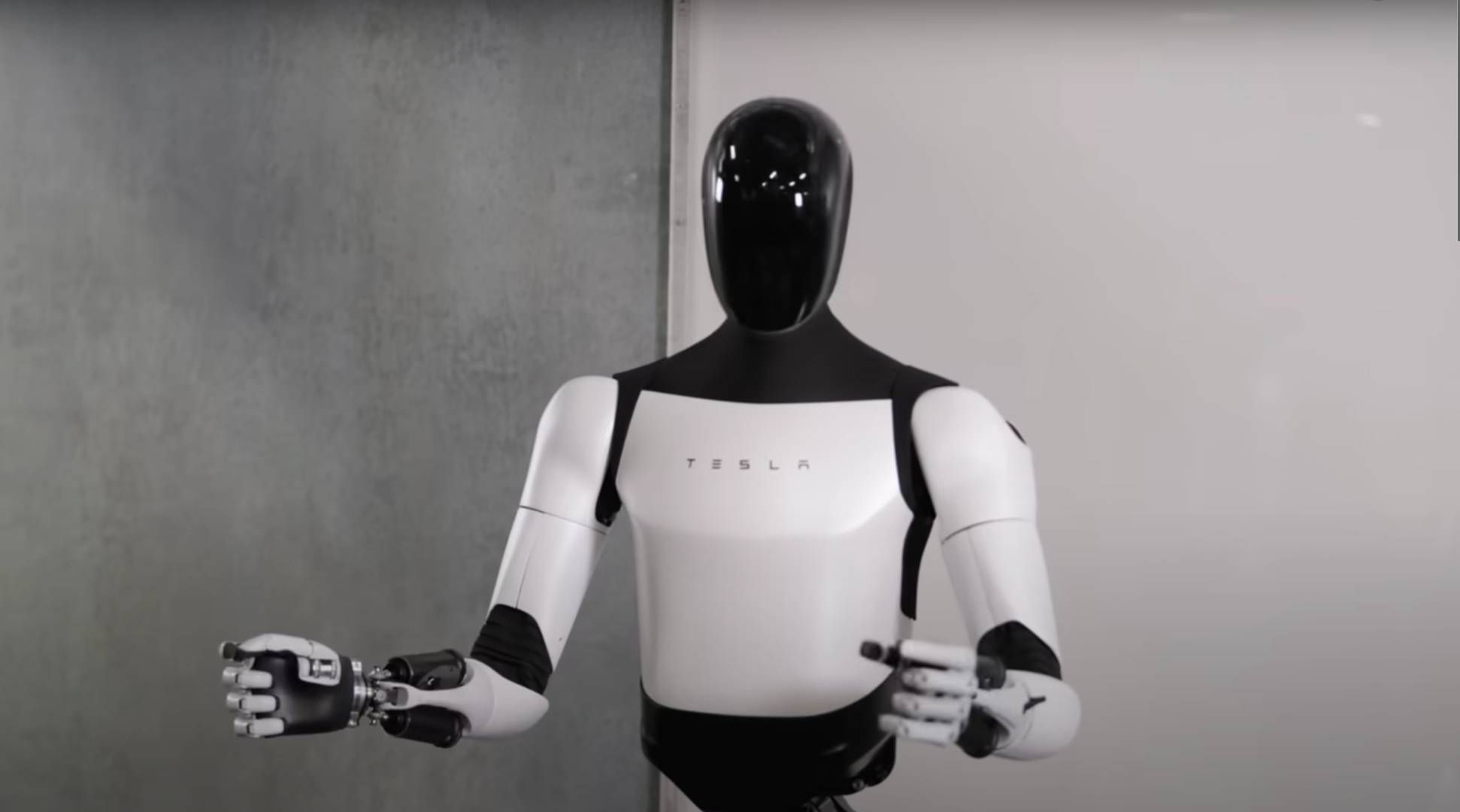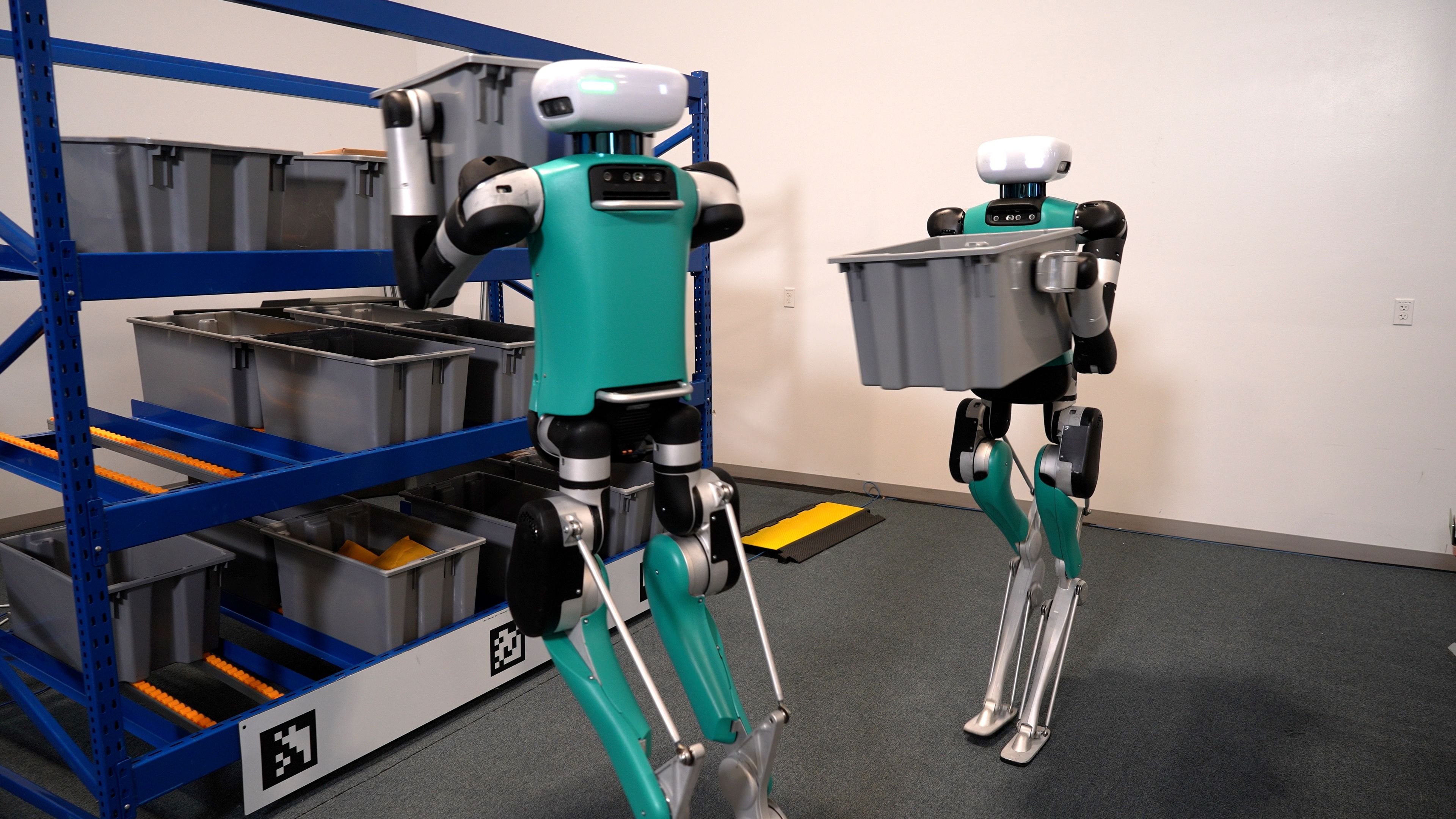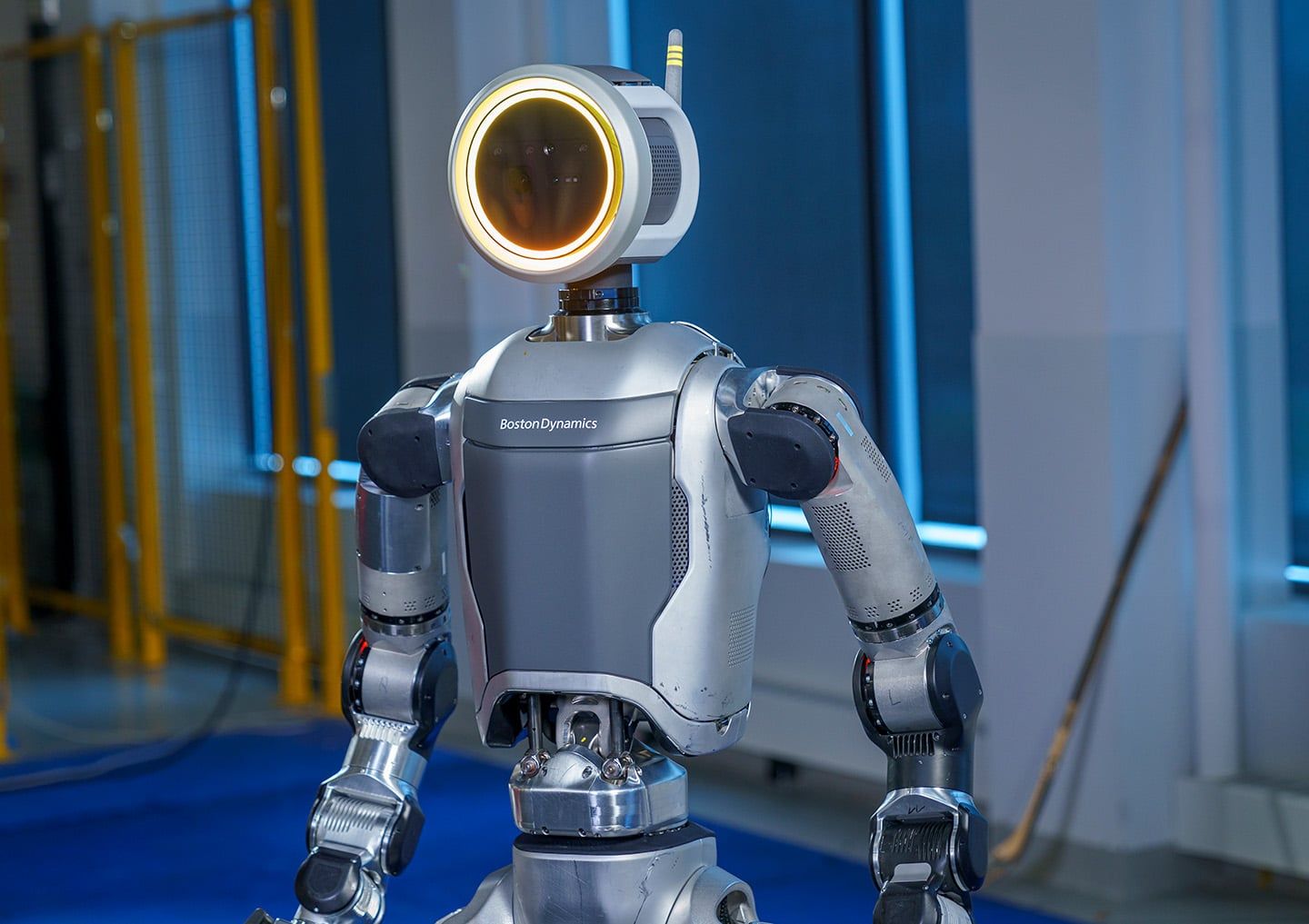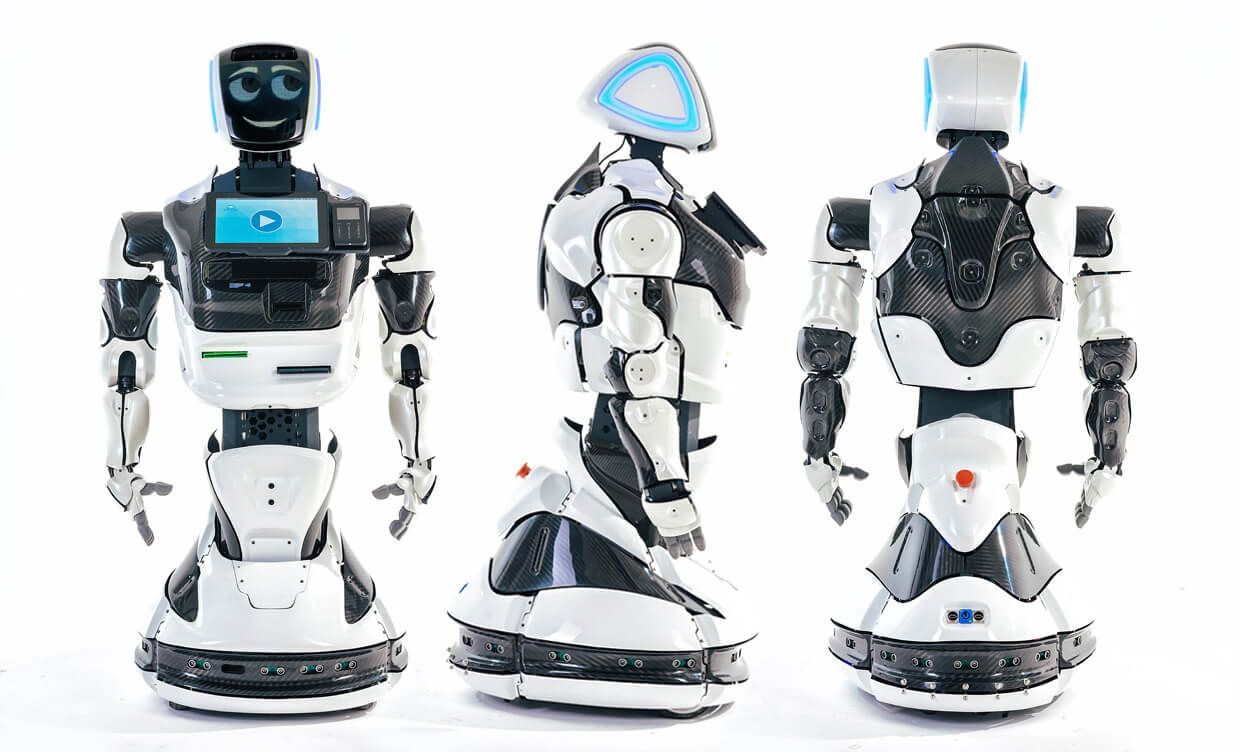Key Takeaways
- Competition in the humanoid robot space has intensified due to the emergence of advanced platforms from various companies.
- Advances in infrastructure technology, large language models, and AI have resulted in the rapid growth of the market for humanoid robots.
- Companies are racing to develop innovative humanoid robots with diverse capabilities to revolutionize industries and everyday life.
Elon Musk talks a big game about Tesla’s upcoming Optimus humanoid robot, yet, with the likes of the Unitree G1 and Boston Dynamics Atlas, robotics platforms are becoming increasingly capable of navigating and interacting with the human-centric world just as well as—if not better than—Tesla’s bipedal bot.
With the promise of revolutionizing industries from manufacturing to healthcare, as well as replacing human workers in dangerous and repetitive tasks, these mechanical systems have drawn immense amounts of hype and media publicity in recent years. But which cutting-edge platform will emerge as the dominant force in this burgeoning field?
The State of the Embodied AI Industry
Major corporations and tiny startups alike have been working on bipedal robot technology for nearly half a century. Honda was working on the precursor to the ASIMO, which debuted in 2000, as far back as the 1980s. Yet, even through the first decades of the 21st century, research efforts struggled with a lack of processing power and data bandwidth (not to mention effective actuators and capable control algorithms) in building more capable humanoid robots.
Today, thanks to significant advancements in improved compute capabilities (yay, Moore’s Law!), more efficient batteries, more accurate and reliable sensors, and machine learning, there is no shortage of companies developing embodied AI—that is, an AI that integrates machine learning, computer vision, and natural language technologies into a physical system, like a robot. You only need to look at the 2024 World Robot Conference held in Beijing in August, in which nearly 30 Chinese robotics firms (and Tesla, to an extent) showed off their latest and greatest in humanoid workers designed to operate in factories and warehouses.
According to research from Goldman Sachs, the market for humanoid robots is growing year-over-year. The market could reach valuations as high as $38 billion by 2035, “up more than sixfold from a previous projection of $6 billion,” the report reads, with nearly 1.4 million robots shipped annually for various consumer and industrial applications.
The researchers cited recent advancements in large language models as the key factor in its projection revision. What’s more, the cost of components continues to decline with Goldman Sachs estimating that today’s robotics system cost on average between $30,000 and $150,000 (not including additional training and development costs) to build.
Here are some of the major platforms that either already have, or are set to, hit the market with humanoid robots of their own.
Optimus
If you’re one to believe Elon Musk’s continuous bragging, Tesla’s Optimus “has the potential to be more significant than [Tesla’s] vehicle business over time.” It was first announced during the company’s AI Day event in August 2021, with the prototype debuting in 2022. The second generation robot was shown poaching an egg in 2023, though it is still unclear whether those actions were being teleoperated by Tesla employees.
The Optimus itself stands 5 foot 8 inches tall, weighs 125 pounds, and can carry up to 45 pounds without problems using its 11-degree of freedom (DoF) hands. It can also deadlift 150 pounds and walk around at 5 mph. The company is currently hiring folks at $48/hour to work as “Data Collection Operators” to help train the AI by wearing motion capture suits while they “walk along test routes and perform designated tasks.”
Digit
Digit, the humanoid robot developed by Agility Robotics, is a groundbreaking piece of technology with impressive capabilities. It stands 5 feet 9 inches tall and weighs 140 pounds, can lift up to 35 pounds and move at 1.5 meters per second, which is roughly the average person’s preferred walking speed. Digit is equipped with a powerful battery, advanced sensors, and a sophisticated control system, making it capable of navigating various terrains, and even climbing stairs.
Digit is already being put to work in commercial applications. In late 2023, Agility Robotics and Amazon partnered to employ Digit in the online retailer’s warehouses, picking up empty yellow bins off a shelf and depositing them on a conveyor several feet away. Agility Robotics has also teamed with GXO Logistics for “a proof-of-concept pilot,” where Digit moves tote boxes back and forth in the company’s Spanx production facility in Flowery Branch, Ga.
Atlas
The Atlas from Boston Dynamics made its debut at the 2012 DARPA Robotics Challenge (DRC) and has served as the standard-bearer for humanoid robotics for more than a decade. The Atlas has undergone numerous iterations over the years. Prior to the DRC finals in 2015, Boston Dynamics released an upgraded version of Atlas which ran on battery power rather than tethers.
The following year, the company released the second generation HD Atlas which was “electrically powered and hydraulically actuated,” enabling it to work both indoors and out. In 2024, Boston Dynamics revealed that it would be retiring the HD Atlas, noting “it’s time for our hydraulic Atlas robot to kick back and relax,” while showing off its even more advanced, all-electric successor.
The new Atlas reportedly exceeds human performance in terms of both strength and flexibility. And while the company has not yet made the Atlas commercially available as it has its quadrupedal Spot, Boston Dynamics now refers to Atlas as a product which means we very well could see it enter the workforce in the near future.
Promobot may move about on a wheeled platform rather than on humanoid legs, but that doesn’t slow it down one bit. Developed by the Russian robotics manufacturer of the same name, Promobot is designed to interact with people in a variety of capacities. It can serve as an office consultant, scanning documents and answering questions or as a building manager, issuing access keys and offering navigation assistance to visitors. It can work as a concierge or venue tour guide, or even as a medical assistant.
What’s more, Promobot is reportedly able to recognize and remember faces (even ones the company hasn’t bought the rights to), speak with people using a targeted script, take payments, print photos, and, of course, display promotional materials on its large, chest-mounted touchscreen. It stands just over 5 feet tall and weighs a stout 286 pounds, though a ring of obstacle avoidance sensors mounted around its base keep Promobot from accidentally rolling over your toes.
Figure 01 and 02
Digit isn’t the only robot already working on factory floors. The Figure 01 and 02 humanoid robots are already hard at work in the body shop of BMW’s sprawling Spartanburg production facility, moving bins and boxes back and forth.
The Figure 01 robot stands five and a half feet tall, weighs 132 pounds, and can carry up to 44 pounds of material at a time. It can walk up to 2.7 MPH and operate for up to five hours before needing to recharge. The Figure 02, which the company claims as “the world’s first commercially-viable autonomous humanoid robot” was a “ground-up redesign,” according to Figure co-founder Brett Adcock. It utilizes an exoskeleton architecture with integrated wiring, can run up to 20 hours before needing to recharge, and offers “human equivalent strength from its 16 DoF hands.”
Yuanzheng A2
Tesla’s electric vehicles are seeing growing competition from the Chinese market, and it looks like Optimus will as well. In August, Shanghai-based Agibot introduced five models of wheeled and biped humanoid robots, led by its flagship model, the Yuanzheng A2. It stands just over five and a half feet tall, weighs about 120 pounds and is reportedly dextrous enough to insert thread into the eye of a needle.
While Optimus is still in early testing at Tesla’s various factories, Agibot’s robotic lineup will reportedly go on sale in October with the company expecting to sell around 300 units by the end of the year. Details on the A2 are otherwise scarce, so we’ll have to wait until they begin shipping to see if this rivalry will actually happen.
G1
The Unitree G1 is already on sale for a measly $16,000, making it one of the least expensive humanoid robots on the market today. The petite “humanoid agent AI avatar” stands just over four feet tall and weighs around 70 pounds. With as many as 43 joint motors, the G1 can fold itself, quite literally, into knots. Its three-finger force control hand is dextrous enough to wield tools and sturdy enough to smash walnut shells. However, it can only operate for 2 hours at a time.
Unitree debuted the G1 in July 2024 and has instituted a number of design improvements, including stronger build quality and more refined appearance, as it gears up for mass production. There is no word yet on when deliveries will begin.
The Race for Robot Supremacy: Boom or Bust?
We’re entering a fascinating period for robotics. With a growing number of companies entering the market, the battle for dominance will be fierce. Sure, Tesla’s Optimus grabs headlines, but established players like Figure and Agility Robotics are already deploying their products in real-world applications.
This surge in development promises a future where robots seamlessly integrate into our lives, doing everything from tedious factory tasks to customer service. However, several questions remain. Will these advancements translate into a robotics revolution, or will the high cost and public perception limit their impact? Only time will tell which companies will win out, but one thing is certain: the race for robot supremacy will have a profound impact on the way we work and live.











